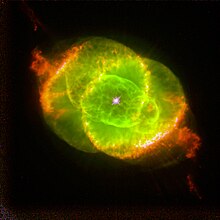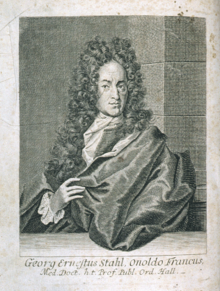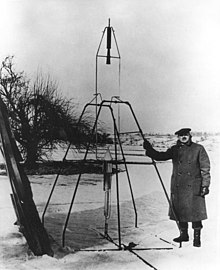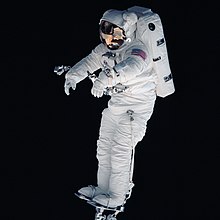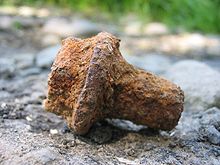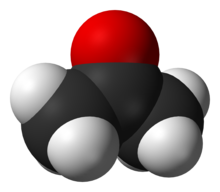Oxygen
Oxygen is a chemical element with atomic number 8 and represented by the symbol O. Its name comes from the Greek roots ὀξύς (oxys) ('acid', literally 'sharp', referring to the taste of acids) and –γόνος (-gonos) ('producer', literally 'begetter'; that is, & #34;producer of acids"), because at the time it was given this name it was believed, incorrectly, that all acids required oxygen for their composition. Under normal conditions of pressure and temperature, two atoms of the element bond to form dioxygen, a colorless, odorless, and tasteless diatomic gas with the formula O2. This substance constitutes an important part of the atmosphere and is necessary to support terrestrial life.
It is part of the anphigenes group on the periodic table and is a highly reactive non-metallic element that readily forms compounds (especially oxides) with most elements, except the noble gases helium and neon. It is also a strong oxidizing agent and has the second highest electronegativity of all the elements, second only to fluorine. Measured by its mass, oxygen is the third most abundant element in the universe, after hydrogen and helium, and the most abundant in the Earth's crust, since it forms practically half of its mass. Due to its chemical reactivity, it cannot remain in the Earth's atmosphere as a free element without being constantly replenished by the photosynthetic action of organisms that use it. solar energy to produce elemental oxygen from water. Elemental oxygen O2 only began to accumulate in the atmosphere after the appearance of these organisms, approximately 2.5 billion years ago. Diatomic oxygen makes up 20.8% of the volume of the Earth's atmosphere.
Since it constitutes most of the mass of water, it is also the major component of the mass of living things. Many of the most important molecules that are part of living things, such as proteins, nucleic acids, carbohydrates, and lipids, contain oxygen, as do the major inorganic compounds that make up animal shells, teeth, and bones. Elemental oxygen is produced by cyanobacteria, algae and plants and is used by all complex forms of life for their cellular respiration. It is toxic to obligate anaerobic organisms, the early forms of life that dominated Earth until O2 began to accumulate in the atmosphere. Another (allotrope) form of oxygen, ozone (O3), helps protect the biosphere from ultraviolet radiation at high altitudes, in the so-called ozone layer, but is polluting near the surface, where is a byproduct of smog. At altitudes even higher than Low Earth Orbit, atomic oxygen has a significant presence and causes erosion on spacecraft.
Carl Wilhelm Scheele independently discovered oxygen at Uppsala in 1773, or even earlier, and Joseph Priestley, in Wiltshire in 1774, but the honor usually goes to Priestley because he published his work earlier. Antoine Lavoisier, whose research helped to discredit the then popular phlogiston theory of combustion and corrosion, coined the name "oxygen" in 1777. It is produced industrially by fractional distillation of liquefied air, the use of zeolite with pressure cycling to concentrating oxygen from air, water electrolysis and other means. Oxygen is used in the production of steel, plastics, and textiles; rocket boosters; oxygen therapy; and assisted breathing in aircraft, submarines, spaceflight, and scuba diving.
Features
Structure
Under normal conditions of pressure and temperature, oxygen is a colorless and odorless gas with the molecular formula O2, in which two oxygen atoms are linked with an electronic configuration in the triplet state. This bond has a bond order of two and is often simplified in descriptions as a double bond or as a combination of one two-electron bond and two three-electron bonds.
Triplet oxygen—not to be confused with ozone, O3—is the ground state of the O2 molecule, which has two unpaired electrons occupying two degenerate molecular orbitals. These orbitals are classified as antibonding—they weaken the bond order from three to two—so that the dioxygen bond is weaker than the diatomic nitrogen triple bond, in which all orbitals of the Molecular bonds are filled, but some antibonding orbitals are not.
In their normal triplet form, O2 molecules are paramagnetic; that is, in the presence of a magnetic field they form a magnet, due to the spin magnetic moment of the unpaired electrons in the molecule and the negative exchange interaction between adjacent O2 molecules. A magnet it attracts liquid oxygen to such an extent that, in laboratory demonstrations, a thread of liquid oxygen can be held against its own weight between the poles of a strong magnet. Singlet molecular oxygen is a name given to several higher energy O2 species, in which all electron spins are paired. It is much more reactive with common organic molecules than molecular oxygen itself. In nature, singlet oxygen is usually formed with water in photosynthesis, using solar energy. It is also produced in the troposphere by photolysis of ozone by short-wavelength light, as well as by the immune system. as a source of active oxygen. In photosynthetic organisms—and possibly also in animals—carotenoids play a critical role in absorbing energy from singlet oxygen and converting it to its unexcited state before it can cause tissue damage.
- Dissociation energy
Dissociation energy of diatomic molecules O-X at 25 °C in kJ/mol (under laboratory conditions):
| H 429.91 | He | ||||||||||||||||
| Li 340.5 | Be 437 | B 809 | C 1076.38 | N 631.62 | O 498,36 | F 220 | Ne | ||||||||||
| Na 270 | Mg 358,2 | Al 501.9 | Yeah. 799.6 | P 589 | S 517.9 | Cl 267,47 | Ar | ||||||||||
| K 271,5 | Ca 383,3 | Sc 671,4 | Ti 666,5 | V 637 | Cr 461 | Mn 362 | Fe 407 | Co 397,4 | Ni 366 | Cu 287,4 | Zn 250 | Ga 374 | Ge 657,5 | As 484 | Separate 429.7 | Br 237,6 | Kr 8 |
| Rb 276 | Mr. 426.3 | And 714.1 | Zr 766.1 | Nb 726.5 | Mo 502 | Tc 548 | Ru 528 | Rh 405 | Pd 238,1 | Ag 221 | Cd 236 | In 346 | Sn 528 | Sb 434 | You 377 | I 233.4 | Xe 36.4 |
| Cs 293 | Ba 562 | ♪ | Hf 801 | Ta 839 | W 720 | Re 627 | You 575 | Go 414 | Pt 418.6 | Au 223 | Hg 269 | Tl 213 | Pb 382,4 | Bi 337.2 | Po | At | Rn |
| Fr | Ra | ** | Rf | Db | Sg | Bh | Hs | Mt | Ds | Rg | Cn | Nh | Fl | Mc | Lv | Ts | Og |
| ♪ | La 798 | Ce 790 | Pr 740 | Nd 703 | Pm | Sm 573 | Eu 473 | Gd 715 | Tb 694 | Dy 615 | Ho 606 | Er 606 | Tm 514 | Yb 387.7 | Lu 669 | ||
| ** | Ac 794 | Th 877 | Pa 792 | U 755 | Np 731 | Pu 656,1 | Am 553 | Cm 732 | Bk 598 | Cf 498 | That's it. 460 | Fm 443 | Md 418 | No. 268 | Lr 665 | ||
Allotropes
The most normal allotrope of elemental oxygen is called dioxygen (O2), which has a bond length of 121 pm and a binding energy of 498 kJ•mol−1. it is the shape used by complex life forms, such as animals, in their cellular respiration (see biological role) and it is the shape that is of great importance in the composition of the Earth's atmosphere (see Abundance).
Trioxygen (O3) is commonly known as ozone and is a highly reactive allotrope, harmful to lung tissue. Ozone is produced in the upper atmosphere when O2 combines with atomic oxygen due to the splitting of O2 by ultraviolet radiation. Since ozone is a powerful absorber in the ultraviolet region of the electromagnetic spectrum, the layer of Ozone in the upper atmosphere functions as a protective shield from the radiation the planet receives. Near the Earth's surface, however, it is a pollutant formed as a by-product of automobile emissions. The metastable molecule tetraoxygen (O4) was not discovered until 2001, and it was assumed to exist in one of the six solid oxygen phases. It was shown in 2006 that this phase, created by pressurizing the O2 to 20 GPa, is in fact an O8 trigonal system cluster. it has the potential to be a much more powerful oxidizer than O2 and O3 and could therefore be used as a rocket propellant. In 1990 it was discovered a metallic phase when solid oxygen is subjected to a pressure greater than 96 GPa and it was shown in 1998 that at very low temperatures it becomes superconducting.
Physical properties
Oxygen is more soluble in water than nitrogen; it contains approximately one molecule of O2 for every two molecules of N2, compared to the ratio in the atmosphere, which is about 1:4. The solubility of oxygen in water is temperature dependent, dissolving about twice as much (14.6 mg•L−1) at 0 °C than at 20 °C (7.6 mg•L−1). At 25 °C and 1 atmosphere pressure, fresh water contains about 6.04 milliliters (ml) of oxygen per liter, while seawater contains about 4. 95 ml per liter. At 5 °C the solubility increases to 9.0 ml (50% more than at 25 °C) per liter in water and 7.2 ml (45% more) in seawater.
Oxygen condenses at 90.20 K (−182.95 °C, −297.31 °F) and freezes at 54.36 K (−218.79 °C, −361.82 °F). Both liquid and solid O2 are substances with a soft sky-blue color caused by red absorption, in contrast to the blue color of the sky, which is due to Rayleigh scattering of the blue light. High purity liquid O2 is usually obtained through the fractional distillation of liquefied air. Liquid oxygen can also be produced by condensing air, using liquid nitrogen as a refrigerant. It is a highly reactive substance and must be separated from flammable materials.
Isotopes and stellar origin
Oxygen found in nature is made up of three stable isotopes: 16O, 17O and 18O, of which 16O is the most abundant (99.762% natural abundance).
Most of 16O is synthesized at the end of the helium burning process in a massive star, but some is produced in the neon burning process. 17 O arises primarily from the combustion of hydrogen to helium during the CNO cycle, making it a common isotope in hydrogen burning zones in stars. For its part, most 18O is produced when 14N—which is abundant due to CNO burning—captures a 4He core, resulting in a high abundance of 18O in the helium-rich regions of massive stars.
Fourteen radioisotopes have been characterized, of which the most stable are 15O with a half-life of 70.606 seconds. All the other radioactive isotopes have half-lives of less than 27 seconds and most of these, less than 83 milliseconds. Isotopes lighter than 16O decay form is β+ decay to produce nitrogen and, for those heavier than 16O 18O, beta decay to form fluorine.
Abundance
Oxygen is the most abundant chemical element, by mass, in the Earth's biosphere, air, sea, and soil. It is also the third most abundant in the universe, after hydrogen and helium. About 0.9% of the Sun's mass is oxygen, which also constitutes 49.2% of the mass of the Earth's crust and is the main component of the Earth's oceans (88.8% of its total mass). Gaseous oxygen is the second most abundant component in the Earth's atmosphere, accounting for 20.8% of its volume and 23.1% of its mass (about 1015 tons). The Earth is an exception among the planets of the Solar System due to the high concentration of gaseous oxygen in its atmosphere; for example, Mars (with 0.1% O2 of its total volume) and Venus have much lower concentrations. However, the O2 that surrounds these planets comes exclusively from the reaction suffered by molecules that contain oxygen, such as carbon dioxide, due to the effect of ultraviolet radiation.
The unusually high concentration of oxygen gas on Earth is the result of the circulation cycle. This biogeochemical cycle describes the movement of oxygen within its three main reserves on the planet: the atmosphere, the biosphere, and the lithosphere. The most important driving factor in this cycle is photosynthesis, responsible for Earth's modern atmosphere, which releases oxygen into the atmosphere, while respiration and decay processes remove it. In the current equilibrium, production and consumption take place at a ratio of approximately 1/2000 of all atmospheric oxygen per year.
| Z | Element | Masic fraction in parts per million |
|---|---|---|
| 1 | hydrogen | 739 000 |
| 2 | helio | 240 000 |
| 8 | Oxygen | 10 400 |
| 6 | Carbon | 4600 |
| 10 | neon | 1340 |
| 26 | Iron | 1090 |
| 7 | nitrogen | 960 |
| 14 | Silice | 650 |
| 12 | Magnesium | 580 |
| 16 | Sulphur | 440 |
Uncombined oxygen is also found in solutions in the planet's bodies of water. The increased solubility of O2 at low temperatures (see Physical Properties) has important implications for marine life, as the polar oceans support a much higher density of life due to their higher oxygen content. The amount of O2 in the water may have been reduced by water pollution, due to the decomposition action of algae and other biomaterials by a process called eutrophication. Scientists assess this aspect of water quality by measuring its biological oxygen demand, or the amount of O2 needed to restore it to a normal concentration.
Biological role
Photosynthesis and Respiration
Oxygen is released by photosynthetic bacteria, algae, and plants through photosynthesis. In the reverse process, aerobic organisms, through respiration, use oxygen to convert nutrients into energy (ATP). The decrease in oxygen causes hypoxemia and its complete lack, anoxia, which can lead to the death of the organism.
In nature, uncombined oxygen is produced by the photodecomposition of water during photosynthesis. By some estimates, green algae and cyanobacteria from marine environments provide about 70% of that produced on Earth, and land plants the rest. Some researchers estimate the oceanic contribution to atmospheric oxygen to be even higher, while others they place it below, around 45% of the planet's total atmospheric oxygen each year.
A simplified global formula for photosynthesis is:
6 CO2 + 6 H2O + photons → C6H12O6 + 6 O2carbon dioxide + water + sunlight → glucose + dioxygenPhotolytic evolution of oxygen occurs in the thylakoid membranes of photosynthetic organisms and requires the energy of four photons. Many processes are involved, but the result is the formation of a one-proton gradient across the thylakoid membrane, which is used to synthesize adenosine triphosphate (ATP) by photophosphorylation. The remaining O2 after oxidation of the water molecule is released into the atmosphere.
Molecular dioxygen is essential for cellular respiration in all aerobic organisms, as it is used by mitochondria to help generate adenosine triphosphate during oxidative phosphorylation. The reaction for aerobic respiration is basically the opposite of photosynthesis and is simplified as follows:
C6H12O6 + 6 O2 → 6 CO2 + 6 H2O + 2880 kJ•mol−1In vertebrates, O2 diffuses through the lung membranes to the red blood cells. The hemoglobin surrounds the O2 and causes it to change its color from bluish-red to bright red (CO2 is released from another part of the hemoglobin through the effect Bohr). Other animals use hemocyanin (mollusks and some arthropods) or hemerythrin (spiders and lobsters). One liter of blood can dissolve 200 cm³ of O2.
Reactive oxygen species, such as the superoxide ion (O2-) and hydrogen peroxide, are dangerous byproducts of oxygen use in organisms. Some parts of the immune system of more advanced organisms, however, create peroxide, superoxide, and singlet oxygen to destroy invading microbes. Reactive oxygen species also play an important role in the hypersensitive response of plants against pathogenic attack.
A resting human adult breathes 1.8 to 2.4 grams of oxygen per minute. Added together by all people on the planet, that makes a total of 6 billion tons of oxygen per year.
Content in the body
| Unit | Alveolar pressure lung gases | Blood oxygen | Venous blood gas |
|---|---|---|---|
| kPa | 14.2 | 11-13 | 4.0-5.3 |
| mmHg | 107 | 75-100 | 30-40 |
The oxygen content in the body of a living being is normally highest in the respiratory system and decreases along any arterial system, peripheral tissues and venous system, respectively. The oxygen content in this sense is usually given as the partial pressure, which is the pressure that oxygen would have if it occupied the volume of the veins by itself.
Accumulation in the atmosphere
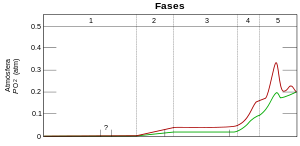
Uncombined gaseous oxygen was almost non-existent in Earth's atmosphere before the evolution of photosynthetic bacteria and archaebacteria. It first appeared in significant numbers during the Paleoproterozoic (around 2.5 and 1.6 billion years ago). Originally, oxygen combined with dissolved iron in the oceans to create banded iron formations. The oceans began exhaling uncombined oxygen 2.7 billion years ago, reaching 10% of their current level about 1.7 billion years ago.
The presence of large amounts of uncombined dissolved oxygen in the oceans and atmosphere may have led to the extinction of most anaerobic organisms then living, during the Great Oxygenation Event (oxygen catastrophe) about 2.4 billion years ago. However, the use of O2 in cellular respiration allows aerobic organisms to produce much more ATP than anaerobes, helping the former to dominate the Earth's biosphere. Photosynthesis and Cellular respiration of O2 allowed the evolution of eukaryotic cells and, eventually, the appearance of complex multicellular organisms such as plants and animals.
Since the beginning of the Cambrian period 540 million years ago, O2 levels have fluctuated between 15% and 30% by volume. years) the O2 level in the atmosphere reached a maximum volume of 35%, which may have contributed to the large size of insects and amphibians at that time. Human activity, even if The combustion of 7 billion tons of fossil fuel each year is considered to have had very little impact on the amount of combined oxygen in the atmosphere. At current levels of photosynthesis, it would take about 2,000 years to regenerate the full amount of O2 in the current atmosphere.
History
First experiments
One of the first known experiments on the relationship between combustion and air was developed by the ancient Greek mechanics writer Philo of Byzantium, in the 2nd century BC. In his work Pneumatics, Philo observed that by inverting a container over a lighted candle and surrounding the neck with water, a part of the liquid would rise up the neck. He incorrectly assumed, that some parts of the air in the container became the classical element of fire and was then able to escape through pores in the glass. Many centuries later, Leonardo da Vinci observed that a portion of the air is consumed during combustion and respiration.
At the end of the 17th century, Robert Boyle proved that air is necessary for combustion. The English chemist John Mayow perfected his work by showing that it required only a part of the air, which he called spiritus nitroaereus or simply nitroaereus. mouse like a burning candle in a closed container over water, caused the water to rise and replace one-fourteenth the volume of air before the candle went out or the mouse died. Because of this he surmised that the nitroaereus is consumed by both respiration and combustion.
Mayow observed that antimony increased in weight when heated and inferred that nitroaereus must have combined with it. He also thought that the lungs separated nitroaereus from air and they passed it into the blood and that animal heat and muscular movement were products of the reaction of the nitroaereus with certain substances in the body. He published reports of these experiments and other ideas in 1668, in his work Tractatus duo, in the treatise "De respiratione".
Phlogiston theory
Robert Hooke, Ole Borch, Mikhail Lomonosov, and Pierre Bayen produced oxygen during experiments in the 17th and 18th centuries, but none of them recognized it as an element. This may have been partly due to the prevalence of the philosophy of combustion and corrosion, called the phlogiston theory, which at that time was the preferred explanation for these processes.
This theory, established in 1667 by the German chemist Johann Joachim Becher and modified by fellow chemist Georg Stahl in 1731, postulated that all combustible materials consisted of two parts; one, called phlogiston, which was emitted by burning the substance in question, and another, called dephlogisticated, which was taken for its true form or calx (ash; chalk in Latin).
Highly combustible materials that leave little residue, such as wood or coal, were thought to be made mostly of phlogiston, while non-combustible substances that corrode, such as iron, contain very little. Air had no role in the phlogiston theory nor were any quantitative experiments performed to test the idea; rather, it was based on observations of what happened when something burned: the most ordinary objects seemed to become lighter and lose something in the process. The fact that a substance like wood actually gained weight as a whole during burning was hidden by the buoyancy of the gaseous products of combustion. One of the first clues to the falsity of the phlogiston theory was that metals also gained weight on oxidation (when they supposedly lost phlogiston).
Discovery
Oxygen was discovered by the Swedish pharmacist Carl Wilhelm Scheele, who produced gaseous oxygen by heating mercuric oxide and various nitrates around 1772. Scheele called the gas "fire air", because it was the only known support for combustion, and wrote a report of his discovery in a manuscript entitled "Chemische Abhandlung von der Luft und dem Feuer" ("Chemical Treatise on Air and Fire") and sent to his publisher in 1775, although it was not published until 1777.
Meanwhile, on August 1, 1774, British clergyman Joseph Priestley conducted an experiment in which he focused sunlight on mercury(II) oxide (HgO) inside a glass tube, releasing a gas which he called "dephlogisticated air". He noted that the candles burned more brightly in the gas and that the mouse was more active and lived longer while breathing it. After inhaling the gas himself, he wrote: "The sensation of the gas in my lungs was not perceptibly different from that of normal air, but my chest felt particularly light and unburdened for a while afterwards." Priestley published his findings in a 1775 paper. entitled "An Account of Further Discoveries in Air", which he included in the second volume of his book entitled Experiments and Observations on Different Kinds of Air. Because he published his findings first, Priestley is usually considered the author of the discovery.
The renowned French chemist Antoine Lavoisier later claimed to have independently discovered the substance. However, Priestley visited Lavoisier in October 1774 and told him about his experiment and how he had released the new gas. Scheele also wrote a letter to Lavoisier, on September 30 of that same year, in which he described his own discovery of the previously unknown substance, but the Frenchman never agreed to receive it. After Scheele's death, a copy of the letter was found in his belongings.
Lavoisier's contribution
Although questioned at the time, Lavoisier conducted the first proper quantitative experiments on oxidation and gave the first correct explanation of how combustion works. He used these and similar experiments, beginning in 1774, to discredit the theory of phlogiston and show that the substance discovered by Priestley and Scheele was a chemical element.
In an experiment, Lavoisier observed that there was no overall increase in weight when tin and air were heated in a closed container. He noted that when he opened the container, air rushed into it, indicating that some of the trapped air had been consumed. He also noted that the tin had increased in weight and that the increase was equal to the weight of the air that returned to the container when he opened it. This and other experiments on combustion were documented in his book Sur la combustion en général, published in 1777. In that work he proved that air is a mixture of two gases: "essential air", essential for combustion and respiration, and the scourge (from the Greek ἄζωτον, lifeless), which was useless for either and would later be called nitrogen.
Lavoisier renamed the «essential air» as oxygen in 1777, from the Greek roots ὀξύς (oxys) (acid, literally «sharp», from the taste of the acids) and -γενής (-genēs) (producer, literally "begetter"), because he mistakenly thought that oxygen was a constituent of all acids. Chemists—particularly Sir Humphry Davy in 1812—after a while they determined that Lavoisier was wrong in his appreciation because, in fact, it is hydrogen that forms the base of acids, but the name had already become popular.
Later Story
John Dalton's original atomic hypothesis assumed that all elements were monatomic and that atoms in compounds would normally have the simplest atomic relationships. For example, Dalton thought that the formula for water was HO, and presented the atomic mass of oxygen as 8 times that of hydrogen, instead of 16, the value given today. In 1805, Louis Joseph Gay- Lussac and Alexander von Humboldt showed that water is made up of two volumes of hydrogen and one of oxygen and, in 1811, Amedeo Avogadro came up with the correct interpretation of the composition of the liquid, based on what is now called Avogadro's Law and on the assumption of elementary diatomic molecules.
At the end of the 19th century, researchers realized that air could be liquefied and its components isolated by compression and cooling. Using a cascade method, the Swiss chemist and physicist Raoul Pictet evaporated sulfur dioxide to liquefy carbon dioxide, which in turn was evaporated to cool the gaseous oxygen enough to become a liquid. He sent a telegram to the French Academy of Sciences on December 22, 1877, announcing his discovery of liquid oxygen. Just two days later, French physicist Louis Paul Cailletet announced his own method for liquefying molecular oxygen. In both cases only a few drops of the liquid were produced, so a conclusive analysis could not be carried out. Oxygen was first stably liquefied on March 29, 1883 by Polish Jagiellonian University scientists Zygmunt Wróblewski and Karol Olszewski.
In 1891 Scottish chemist James Dewar was able to produce enough liquid oxygen to study. The first commercially viable process for producing liquid oxygen was developed independently in 1895 by German engineers Carl von Linde and William Hampson, british. They reduced the temperature of the air until it was liquefied, then distilled the gaseous components by boiling them one by one and capturing them. Later, in 1901, oxyacetylene welding was first demonstrated by burning a mixture of acetylene and O2 compressed. This method of welding and cutting the metal would later become commonplace.
Physicist William Thomson, in 1898, calculated that the oxygen remaining on the planet is only about 400 to 500 years old, based on the rate of use of fossil fuels in combustion.
In 1923, American scientist Robert Goddard became the first person to develop a rocket engine that used gasoline as fuel and liquid oxygen as an oxidant. On March 16, he successfully flew a small, liquid-fuelled rocket 56 m at 97 km/h over Auburn, Massachusetts.
Industrial production
Two main methods are used to produce 100 million tons of O2 extracted from the air for industrial uses each year. The most common is to fractionally distill liquefied air into its various components, with the N2 distilled as a vapor and the O2 left as a liquid.
The other main method of obtaining gaseous O2 consists of passing a jet of clean, dry air through a bed of zeolite molecular sieves, which adsorb the nitrogen and allow a jet to pass through. of gas which is 90 to 93% O2. Simultaneously, the other bed of nitrogen-saturated zeolite releases this gas by reducing the chamber's operating pressure and introducing it countercurrently. part of the oxygen separated in the producing bed. After each complete cycle, the beds are exchanged, allowing a constant supply of oxygen. This is known as pressure swing adsorption and is used to produce oxygen on a small scale.
Oxygen can also be produced by electrolysis of water, decomposing it into oxygen and hydrogen, for which a direct current must be used; if an alternating current were used, the gases at each end would consist of hydrogen and oxygen in the explosive 2:1 ratio. Contrary to popular belief, the 2:1 ratio observed in direct current electrolysis of acidified water does not show that the empirical formula for water is H2O, unless certain premises about the formula are assumed. molecular formula of hydrogen and oxygen. A similar method is the electrocatalytic evolution of O2 from oxides to oxoacids. Chemical catalysts can also be used, such as in the chemical oxygen generator or oxygen candles used in support equipment on submarines and which are still standard equipment on commercial airlines for depressurization. Another air separation technology involves forcing dissolution air through zirconium dioxide-based ceramic membranes, either by high pressure or electric current, to produce virtually pure O2 gas.
For large quantities, the price of liquid oxygen in 2001 was approximately USD 0.21/kg. The cost of the energy needed to liquefy air is the main production cost, so the cost of oxygen It varies depending on the price of energy. For reasons of economy, oxygen is usually transported in large quantities in a liquid state, stored in specially insulated tanks, since one liter of liquefied oxygen is equivalent to 840 liters of gaseous oxygen at atmospheric pressure and 20 °C (68 °F). These tanks are used to fill the large liquid oxygen containers found outside hospitals and other institutions that need huge amounts of pure gaseous oxygen. The liquid oxygen is passed through heat exchangers that convert the cryogenic liquid to a gas before it enters the building. Oxygen is also stored and shipped in cylinders containing the compressed gas, which is useful for certain portable medical applications and flame cutting.
Uses and applications
55% of the world's oxygen production is consumed in the production of steel. Another 25% is dedicated to the chemical industry. Of the remaining 20%, most is used for medicinal applications, flame cutting, as an oxidizer in rocket fuel, and in water treatment.
Medicine
The essential purpose of respiration is to take O2 from the air, and supplemental oxygen is used in medicine. The treatment not only increases the oxygen levels in the patient's blood, but has the side effect of lowering resistance to blood flow in many types of diseased lungs, making the heart's pumping job easier. Oxygen therapy is used to treat emphysema, pneumonia, some heart failure, some disorders that cause high pulmonary arterial pressure, and any disease that affects the body's ability to take in and use oxygen.
The treatments are flexible enough to be used in hospitals, the patient's home or, increasingly, with mobile instruments. Thus, oxygen tents used to be used as oxygen supplements, but have been replaced by oxygen masks and nasal cannulas.
Hyperbaric (high-pressure) medicine uses special oxygen chambers to increase the partial pressure of O2 in the patient and, when necessary, in medical personnel. Monoxide poisoning Carbon monoxide, myonecrosis (gas gangrene), and decompression syndrome are sometimes treated with these devices. Increased O2 concentration in the lungs helps displace carbon monoxide from the blood group of hemoglobin. Oxygen is toxic to the anaerobic bacteria that cause gas gangrene, so increasing its partial pressure helps kill them off. resulting in the formation of inert gas bubbles, mostly nitrogen, in your blood.
Oxygen is also used for patients requiring mechanical ventilation, typically at concentrations greater than 21% found in room air. On the other hand, the isotope 15O was used experimentally in positron emission tomography.
Life support and recreational use
A notable application of O2 as a low-pressure breathing gas is found in modern spacesuits, which envelop the occupants' bodies with pressurized air. These devices use near-pure oxygen at a pressure of about one-third that of normal, resulting in a normal partial pressure in the O2 of the blood. This high-pressure oxygen exchange concentration for low pressure is necessary to maintain the flexibility of spacesuits.
Scuba divers and submariners also use artificially provided O2, but most use normal pressure or a mixture of oxygen and air. The use of pure or near-pure O2 in diving at pressures above sea level is generally limited to rest, decompression, and emergency treatment at relatively shallow depths (~6 meters or less). Deeper diving requires significant dilution of O2 with other gases, such as nitrogen or helium, to help prevent the Paul Bert effect (oxygen toxicity).
Mountain climbers and those traveling in non-pressurized aircraft sometimes have a supply of O2. Passengers on commercial (pressurized) aircraft have a supply of O2 for emergencies, which is automatically made available to them in case of cabin depressurization. A sudden loss of cabin pressure activates chemical oxygen generators above each seat and drops oxygen masks. Pulling on the mask to start the flow of oxygen, as per the safety instructions, forces the iron filings in the sodium chlorate into the container. A constant stream of oxygen is then produced due to the exothermic reaction.
Oxygen, as a supposed mild euphoric, has a history of recreational use in sports and oxygen bars. These are establishments that appeared in Japan, California, and Las Vegas in the late 1990s that offer exposures at higher than normal O2 levels for a fee. Professional athletes, especially In football, they also leave the field on occasion, during breaks, to put on oxygen masks and get a boost to their game. The pharmacological effect is doubtful and the placebo effect is the most likely explanation. There are studies that support this stimulation with mixtures of O2 enriched, but only if they are inhaled during the aerobic exercise.
Industry
Smelting iron ore into steel consumes 55% of the oxygen produced commercially. In this process, O2 is injected via a high-pressure lance into the iron mold, which it expels the impurities of Sulfur and the excess of Carbon, in the form of their respective oxides, SO2 and CO2. The reactions are exothermic and the temperature rises to 1700 Cº.
Another 25% of this oxygen goes to the chemical industry. Ethylene reacts with O2 to create ethylene oxide, which, in turn, is converted to ethylene glycol, the material used as a base to make a wide variety of products, including antifreeze and polyester polymers (the precursors to many plastics and textiles). Oxygen or air is used in the oxy-cracking process, for the production of acrylic acid, diformyl-furan, and benzylic acid. On the other hand, the electrochemical synthesis of hydrogen peroxide from oxygen is a promising technology to replace the currently used hydroquinone process. Last but not least, catalytic oxidation is used in afterburners to remove dangerous gases.
Oxygen is used in flame cutting by burning acetylene with O2 to produce a very hot flame. In this process, metal up to 60 centimeters thick is first heated with a small oxy-acetylene flame, then rapidly cut by a large stream of O2.
Science
Paleoclimatologists measure the ratio of oxygen-18 to oxygen-16 in the skeletons and exoskeletons of marine organisms to determine what the climate was like millions of years ago. Seawater molecules containing the lighter isotope, oxygen-16, evaporate at a slightly higher rate than molecules containing oxygen-18 (12% heavier); this disparity increases at low temperatures. In periods of lower global temperature, snow and rain from that evaporated water tend to be richer in oxygen-16, while the remaining seawater tends to be richer in oxygen. -18. Marine organisms therefore incorporate more oxygen-18 into their skeletons and exoskeletons than they would in a warmer environment. Paleoclimatologists also directly measure this ratio in the water molecules of ice core samples that have been preserved. for several hundred thousand years.
Planetary geologists have measured differences in the abundance of oxygen isotopes in samples from Earth, the Moon, Mars, and meteorites, but they have not been far from being able to obtain reference values for isotope ratios from the Sun, which they are believed to be the same as those of the protosolar nebula. However, analysis of a silicon wafer exposed to the solar wind in space and returned to Earth by the Genesis probe revealed that the Sun has a higher oxygen-16 ratio than our planet. The measurement implies that an unknown process depleted oxygen-16 from the Sun's protoplanetary disk before the fusion of dust grains that formed Earth.
Oxygen has two spectrophotometric absorption bands with maxima at wavelengths of 687 and 760 nanometers. Some remote sensing scientists have proposed using the measurement of glare from vegetation canopies in those bands to characterize plant health from a satellite platform. This approach exploits the fact that in these bands it is possible to distinguish the reflectivity of the vegetation of its fluorescence, which is much weaker. The measurement has a high technical difficulty, due to the low signal/noise ratio and the physical structure of the vegetation, but it has been proposed as a possible method of monitoring the carbon cycle from satellites on a global scale.
Compounds
The oxidation state of oxygen is -2 in almost all known oxygen compounds. For its part, the -1 oxidation state is found in a few compounds, such as peroxides. Compounds in other oxidation states are very rare: −1/2 (superoxides), −1/3 (ozonides), 0 (elemental, hypofluoro), +1/2 (dioxygenyl), +1 (dioxygen difluoride), and +2 (oxygen difluoride).
Oxides and other inorganic compounds
Water (H2O) is hydrogen oxide and is the most common oxygen compound. The hydrogen atoms are covalently bonded to the oxygen in the water molecule, but they also have an additional attraction (about 23.3 kJ•mol−1 per hydrogen atom) with an adjacent oxygen atom of a different molecule. These hydrogen bonds between the water molecules keep them about 15% closer together than would be expected in a simple liquid with Van der Waals forces alone.
Because of its electronegativity, oxygen forms chemical bonds with almost all other elements at elevated temperatures to give the corresponding oxides. However, some elements form oxides directly at normal conditions of pressure and temperature, such as rust formed from Iron. The surface of metals such as aluminum and titanium oxidize in the presence of air and become covered with a thin layer of oxide that passivates the metal and slows down corrosion. Some of the transition metal oxides occur in nature as non-stoichiometric compounds, with slightly less metal than the chemical formula suggests. For example, FeO (wustite), which occurs naturally, is actually written as Fex-1O, where "x" is typically around 0.05.
Oxygen as a compound is present in the atmosphere in small amounts in the form of carbon dioxide (CO2). The rock of the Earth's crust is made up of large parts of oxides of Silicon (silicon dioxide SiO2, found in granite and sand), aluminum (alumina Al2O3, in bauxite and corundum), iron (ferric oxide Fe2O3, in hematite and urine) and calcium (calcium carbonate CaCO3, in limestone). The rest of the earth's crust is also made up of oxygen compounds, in particular various complex silicates. In the terrestrial mantle, of a much greater mass than the crust, silicates of iron and Magnesium abound.
Water-soluble silicates with the forms Na4SiO4, Na2SiO3 and Na 2Si2O5 are used as detergents and adhesives. Oxygen also acts as a ligand for transition metals, forming O2 metal with the iridium atom in the Vaska complex, with the platinum in the PtF6 and with the iron center in the heme group of hemoglobin.
Organic compounds and biomolecules
Among the major classes of organic compounds that contain oxygen are the following (where “R” is an organic group): alcohols (R-OH), ethers (R-O-R), ketones (R-CO-R), aldehydes (R-CO-H), carboxylic acids (R-COOH), esters (R-COO-R), acid anhydrides (R-CO-O-CO-R) and amides (R-C(O)-NR2). There are many important organic solvents that contain oxygen, including: acetone, methanol, ethanol, isopropyl alcohol, furan, tetrahydrofuran, ethyl ether, dioxane, ethyl ethanoate, dimethylformamide, dimethyl sulfoxide, acetic acid, and formic acid. Acetone (CH3(CO)CH3) and phenol (C6H5OH) are They are used as materials in the synthesis of many different substances. Other important organic compounds that contain oxygen are: glycerol, formaldehyde, glutaraldehyde, acetic acid, and acetamide. Epoxides are ethers in which the oxygen atom is part of a three-atom ring.
Oxygen spontaneously reacts with many organic compounds at room temperature or below, in a process called autoxidation. Most organic compounds that contain oxygen are not produced by the direct action of O2. Important industrial and commercial organic compounds produced by direct oxidation of a precursor include ethylene oxide and peracetic acid.
The element is found in almost all biomolecules important to (or generated by) life. Only a few common complex biomolecules, such as squalene and carotene, do not contain oxygen. Of the organic compounds with biological relevance, carbohydrates contain the highest proportion of oxygen in their mass. All fats, fatty acids, amino acids, and proteins contain oxygen (due to the presence of carbonyl groups in those acids and their ester residues). Oxygen is also present in phosphate groups (PO4-3) on the biologically important energy-carrying molecules, ATP and ADP, in the backbone and purines (except adenine and pyrimidines of RNA and DNA) and in bone as calcium phosphate and hydroxyapatite.
Safety and precautions
Toxicity
O2 gas can be toxic at high partial pressures, causing convulsions and other health problems. Toxicity generally begins to appear at partial pressures greater than 50 kPa or 2, 5 times the partial pressure of O2 at sea level (21 kPa; equal to about 50% of the composition of oxygen at normal pressure). This is not a problem except for mechanically ventilated patients, as the gas delivered through oxygen masks is typically only 30-50% O2 by volume (about 30 kPa at normal pressure), although these figures vary significantly depending on the type of mask.
For a time, premature babies were placed in incubators containing O2-rich air, but this practice stopped after some of these children lost their vision.
Breathing pure O2 in space applications, such as in some modern aerospace suits or pioneer spacecraft such as Apollo, causes no damage due to the low total pressures used. In the case of the suits, the partial pressure of O2 in the breathing gas is generally above 30 kPa (1.4 times normal) and the resulting partial pressure in the astronaut's arterial blood alone it is marginally above normal at sea level.
Oxygen toxicity to the lungs and central nervous system can also occur in deep diving and professional diving. Prolonged breathing of an air mixture with a partial pressure of O2 greater than 60 kPa can lead to permanent pulmonary fibrosis. Exposure to partial pressures greater than 160 kPa (~1.6 atmospheres) could cause convulsions, usually fatal to divers. Acute toxicity can occur when breathing an air mixture containing more than 21% O2 at depths of 200 feet or more; the same can happen when breathing 100% O2 at just 6 meters.
Combustion and other risks
Oxygen sources that are highly concentrated encourage rapid combustion. Fire and explosion hazards occur when concentrated oxidizers and fuels are placed too close to each other; however, ignition, either by heat or a spark, is necessary to initiate combustion. Oxygen itself is not a fuel, but rather an oxidizer. The risks of combustion also apply to oxygen compounds with a high oxidizing potential, such as peroxides, chlorates, nitrates, perchlorates and dichromates, because they can give oxygen to the fire.
Concentrated O2 allows rapid and energetic combustion. The steel pipes and vessels used to store and transmit both liquid and gaseous oxygen act as fuel; therefore, the design and manufacture of O2 systems require special attention to ensure that ignition sources are minimized. The fire that killed the Apollo 1 crew in a test on the launch pad went so quickly because the capsule was pressurized with pure O2, but at a pressure slightly greater than atmospheric, instead of 1/3 pressure the normal one that was to be used in the mission.
In the event of a liquid oxygen spill, if it becomes soaked in organic matter such as wood, petrochemicals, and asphalt, it can cause these materials to detonate unpredictably upon subsequent mechanical impact. Like other cryogenic liquids, in contact with the human body can cause freezing of the skin and eyes.
Complementary bibliography
- Walker, J. (1980). "The oxygen cycle." Hutzinger O., ed. Handbook of Environmental Chemistry. Volume 1. Part A: The natural environment and the biogeochemical cycles (in English). Berlin; Heidelberg; New York: Springer-Verlag. p. 258. ISBN 0-387-09688-4.
Contenido relacionado
Van der Waals radius
Tungsten
Deoxyribonucleic acid





